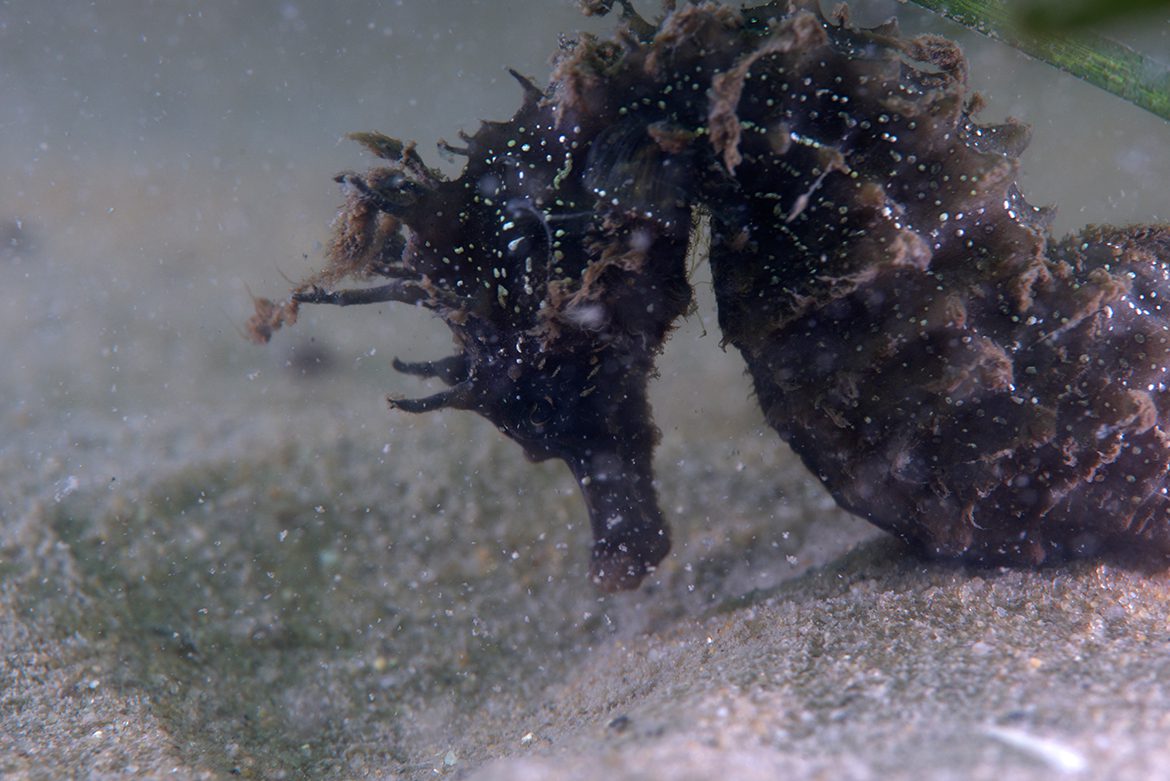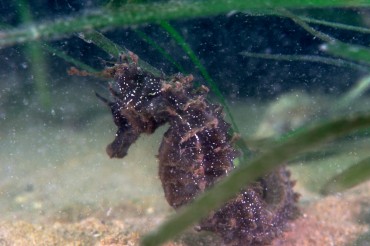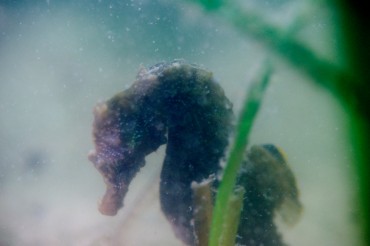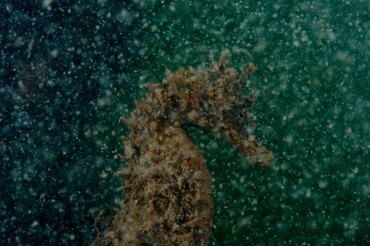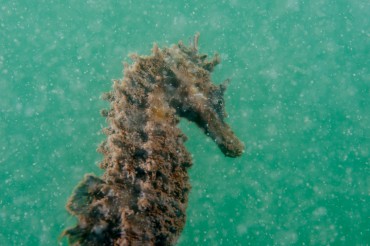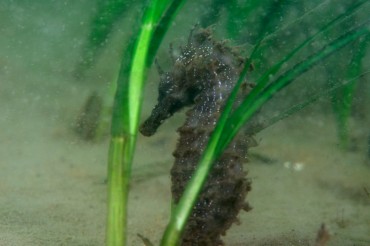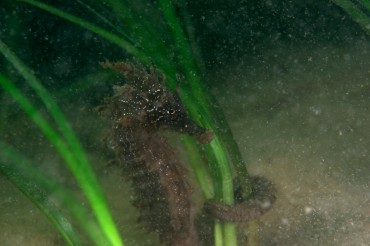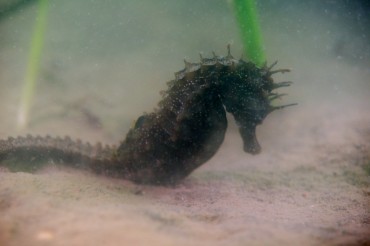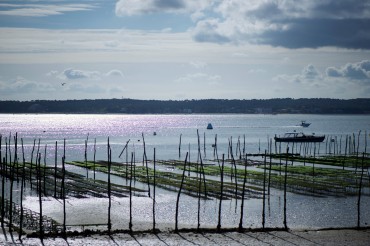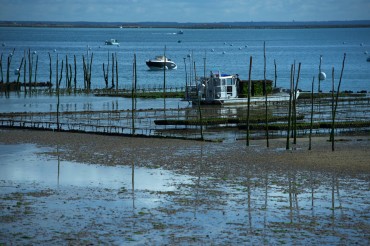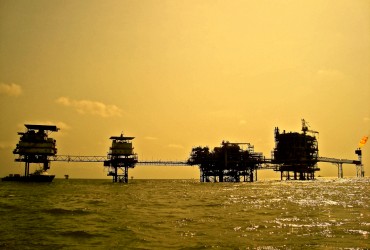The seahorse is not just an exotic fish
Diving in the Bay of Arcachon is not for the fainthearted or the inexperienced. The water temperature is sub 20 degrees for most of the year and is usually a deep pea green, very different from the turquoise colours of warmer seas. Plus, sediment stirred up by the tide reduces visibility to as little as a metre and from springtime onwards pleasure boat traffic is common and dangerous, mostly ignoring dive boats flying an alpha flag.
All these challenges are the saving grace of a little known biological treasure trove. Just a few metres beyond the oyster beds, at a depth of about 3 to 5 metres, herds of seahorses thrive in the eelgrass, an aquatic green plant common to the European coast. They are diminutive, just 15cm long, the size of a human hand.
The Bay of Arcachon is all the more unique for being home to the biggest concentration of seahorses in France. The second largest concentration is in the Etang de Thau. “In some places, there are so many that divers have seen close to fifty in the course of one hour!” said Damien Grima, project manager of data collection on the spotted seahorse (Hippocampus guttalutus) and the short nose (Hippocampus hippocampus). The study only started in 2011.
Surprisingly, despite the iconic and endearing character of this tiny fish, we still know very little of its geographical distribution, its abundance, or its conservation status.
The lack of data is such that the International Union for the Conservation of Nature (IUCN), the world’s most comprehensive inventory of the global conservation status of biological species, categorised 29 of the known 50 species of seahorse as ‘Data Deficient’.
“Compared to other species, seahorses are little studied as they are not edible and don’t represent an economic resource in Europe,” said Damien Grima. “They are ‘just’ part of the marine biodiversity and that is why we are only just starting to study them.”
For a marine biologist, these little creatures are fascinating, they have no scales, a breastplate made of bone, well-developed eyes that move independently from one another, a mouth that sucks its prey like a straw or a vacuum, and an ability to change colour to camouflage or to attract a partner. Seahorses are monogamous and sedentary; some will live their entire lives within a few square metres. But, even more intriguing is that it is the male that incubates the hundreds of eggs laid by the female in a pouch until they hatch after three weeks.
“Twenty years ago, seahorses had almost disappeared altogether from the Bay of Arcachon. For a long time, souvenir shops sold them dehydrated and varnished as lucky charms,” explained Grima. “For some unknown reason, the population has recovered over the last 10 years.”
In Asia, seahorses are still very vulnerable. Chinese medicine credits the European species of the small fish with numerous therapeutic powers and ground down to powder form prescribes them for asthma, arteriosclerosis, incontinence, lymphatic diseases and pain in general. They are also said to be a powerful aphrodisiac. All of this amounts to large-scale fishing.
Although reliable statistics are non-existent, reports confirm that China, Hong Kong and Taiwan alone import almost 40 million dried seahorses per year.
It has proved to be a lucrative business and has led to seahorse farming. In addition to Hawaii and Australia, Ireland also established a seahorse farm in the Connemara in the early 2000s to provide the fish for Chinese medicine and to aquariums worldwide.
Officially, these underwater ranches relieve pressure on the wild species, but marine protection organisations have taken a stand against these fish farms that provide for the Asian market. Their question is simple: does man have the right to dispose of a farmed species in the name of protecting a wild one?
Does this seem like déjà vu to you?
